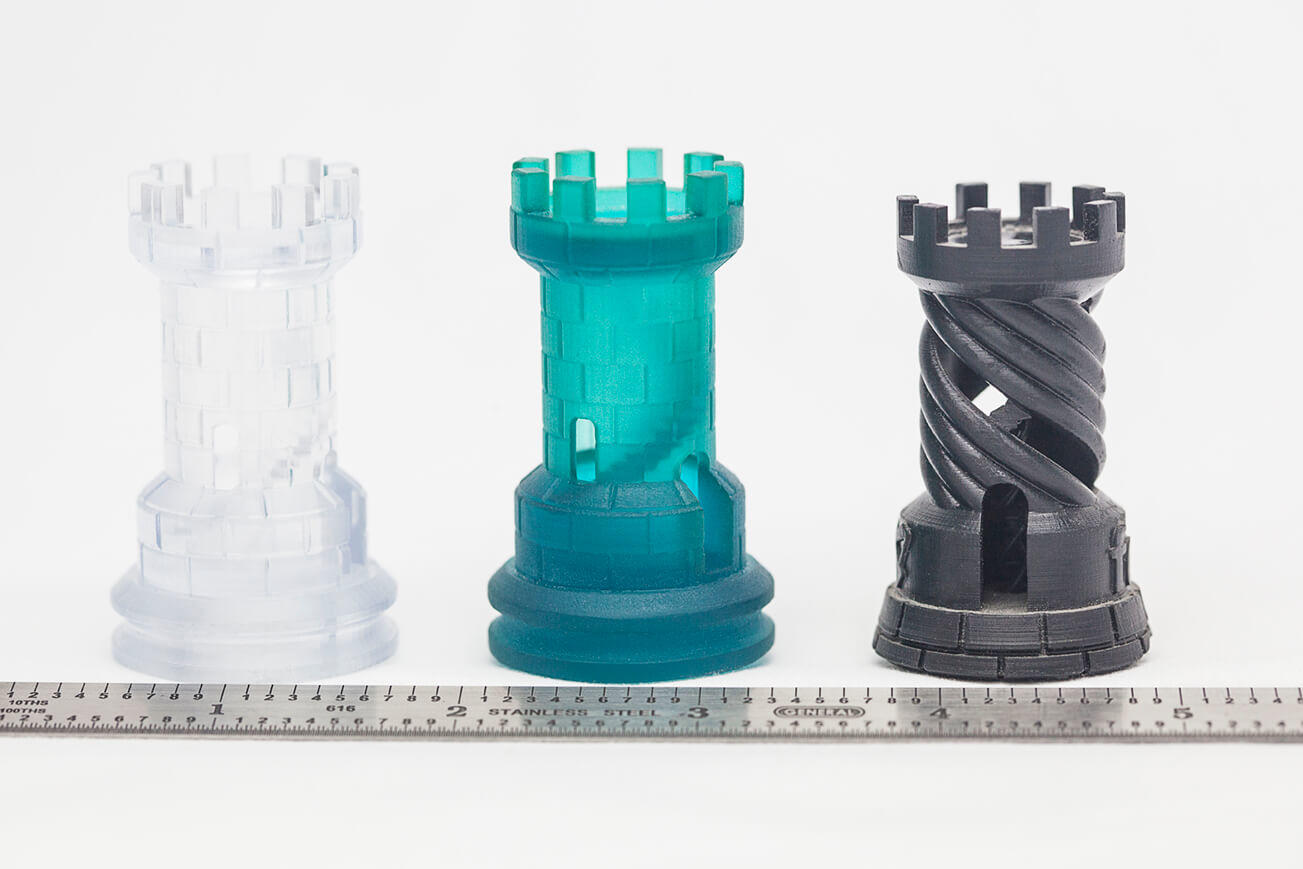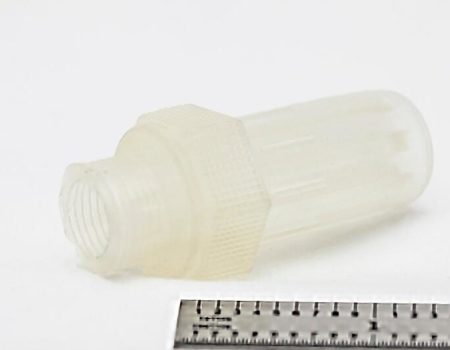Stereolithography (SLA) 3D PRINTING PROVIDES:
- Fine features and smooth surface finish
- Detailed, watertight prototypes and parts
- Selection of resins that replicate thermoplastic-like materials
- Fast turnaround for small part production
APPLICATIONS:
- Proof of concept and show models
- Testing for form/fit and engineering verifications
- Molding and high heat applications
- Transparent covers and light pipes
- Patterns for investment casting
- Rapid tooling, jigs, and fixtures
Commonly known as resin 3D printing, stereolithography (SLA) belongs to the category of vat photopolymerizaton additive manufacturing. SLA 3D printing uses an ultraviolet (UV) laser directed by a software-controlled mirror to selectively cure and solidify photopolymer liquid resin layer by layer. Structural supports are generated during the pre-build setup process and manually removed after the print is completed. Parts are then washed to remove any uncured resin and placed in a UV oven for final curing. Post-print curing increases the strength and stability of resin parts.
Parts printed with SLA technology have high resolution and accuracy, sharp details, and a smooth surface finish. With a range of advanced materials, SLA 3D printing supplies the versatility for a broad range of applications including jigs and fixtures, end-use parts, and robust functional prototypes.
SLA Specifications
BUILD VOLUME: 145 x 145 x 175 mm (5.7 x 5.7 x 6.9 in)
MATERIAL DATA SHEETS:
Standard Clear, Black, White, Grey | High Temp | Tough | Durable | Flexible | Castable | Somos Watershed 11120 | Somos 18420 Protogen
SLA DESIGN GUIDELINES: View Here





